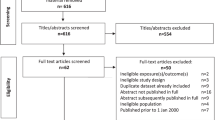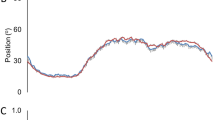Abstract
Soft tissue pressure injuries commonly occur in those with spinal cord injury. They add an immeasurable medical, emotional, and social burden to those who suffer a spinal cord injury and ultimately can cause death due to sepsis when they ulcerate and become infected. Hence it is notable that (i) obstructive sleep apnea and other forms of sleep-disordered breathing are highly prevalent among those with spinal cord injury; (ii) several of the pathophysiologic consequences of sleep-disordered breathing, including hypoxemia, ischemia, oxidative stress, and endothelial dysfunction, would be expected to increase susceptibility to pressure injuries, worsen their severity, and slow or prevent their healing; and (iii) there is emerging clinical evidence that sleep-disordered breathing can have a significant role in the pathogenesis of other types of chronic wounds and that treatment of sleep-disordered breathing can aid in the healing of these wounds. These findings raise the possibility that sleep-disordered breathing may have a widespread and important role in the development, severity, and persistence of pressure injuries in those with spinal cord injury and that treatment of sleep-disordered breathing may be an effective adjunct in their prevention and healing. Studies to determine if there is a functional relationship between sleep-disordered breathing and pressure injuries in individuals with spinal cord injury are warranted.
Similar content being viewed by others
Log in or create a free account to read this content
Gain free access to this article, as well as selected content from this journal and more on nature.com
or
References
International review. Pressure ulcer prevention: pressure, shear, friction and microclimate in context. A consensus document. London: Wounds International; 2010.
Taylor R, James T. The role of oxidative stress in the development and persistence of pressure ulcers. In: Bader DL, Bouten CVC, Colin D, Oomens CWJ, editors. Pressure ulcer research: current and future perspectives. Berlin Heidelberg: Springer; 2005. p. 205–32.
Byrne DW, Salzberg CA. Major risk factors for pressure ulcers in the spinal cord disabled: a literature review. Spinal Cord. 1996;34:255–63.
Sankari A, Vaughan S, Bascom A, Martin JL, Badr MS. Sleep-disordered breathing and spinal cord injury: a state-of-the-art review. Chest. 2019;155:438–45.
Shamsuzzaman ASM, Gersh BJ, Somers VK. Obstructive sleep apnea: implications for cardiac and vascular disease. JAMA. 2003;290:1906–14.
Lavie L. Obstructive sleep apnoea syndrome-an oxidative stress disorder. Sleep Med Rev. 2003;7:35–51.
Hoyos CM, Melehan KL, Liu PY, Grunstein RR, Phillips CL. Does obstructive sleep apnea cause endothelial dysfunction? A critical review of the literature. Sleep Med Rev. 2015;20:15–26.
Unnikrishnan D, Jun J, Polotsky V. Inflammation in sleep apnea: an update. Rev Endocr Metab Disord. 2015;16:25–34.
Larouche J, Sheoran S, Maruyama K, Martino MM. Immune regulation of skin wound healing: mechanisms and novel therapeutic targets. Adv Wound Care. 2018;7:209–31.
Mustoe TA, O’Shaughnessy K, Kloeters O. Chronic wound pathogenesis and current treatment strategies: a unifying hypothesis. Plast Reconstr Surg 2006;117(Suppl 7):35S–41S.
Patt BT, Jarjoura D, Lambert L, Roy S, Gordillo G, Schlanger R, et al. Prevalence of obstructive sleep apnea in patients with chronic wounds. J Clin Sleep Med. 2010;6:541–4.
Altaf Q-AA, Ali A, Piya MK, Raymond NT, Tahrani AA. The relationship between obstructive sleep apnea and intra-epidermal nerve fiber density, PARP activation and foot ulceration in patients with type 2 diabetes. J Diabetes Complicat. 2016;30:1315–20.
Maltese G, Fountoulakis N, Drakatos P, Shah D, Patel K, Sharma A, et al. Elevated obstructive sleep apnoea risk score is associated with poor healing of diabetic foot ulcers: a prospective cohort study. Diabet Med. 2018;35:1494–8.
Vas PRJ, Ahluwalia R, Manas AB, Manu CA, Kavarthapu V, Edmonds ME. Undiagnosed severe sleep apnoea and diabetic foot ulceration - a case series-based hypothesis: a hitherto under emphasized factor in failure to heal. Diabet Med. 2016;33:e1–4.
Author information
Authors and Affiliations
Contributions
SJW conceived the work; SJW and SXC drafted and revised the paper, approved the final version and agree to be accountable for all aspects of the work.
Corresponding author
Ethics declarations
Conflict of interest
The authors declare that they have no conflict of interest.
Additional information
Publisher’s note Springer Nature remains neutral with regard to jurisdictional claims in published maps and institutional affiliations.
Rights and permissions
About this article
Cite this article
Weintraub, S.J., Chen, S.X. A potential widespread and important role for sleep-disordered breathing in pressure injury development and delayed healing among those with spinal cord injury. Spinal Cord 58, 626–629 (2020). https://doi.org/10.1038/s41393-020-0434-6
Received:
Revised:
Accepted:
Published:
Issue date:
DOI: https://doi.org/10.1038/s41393-020-0434-6



